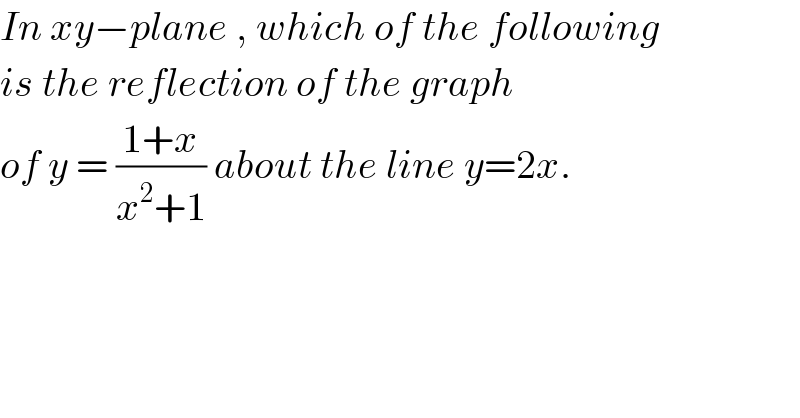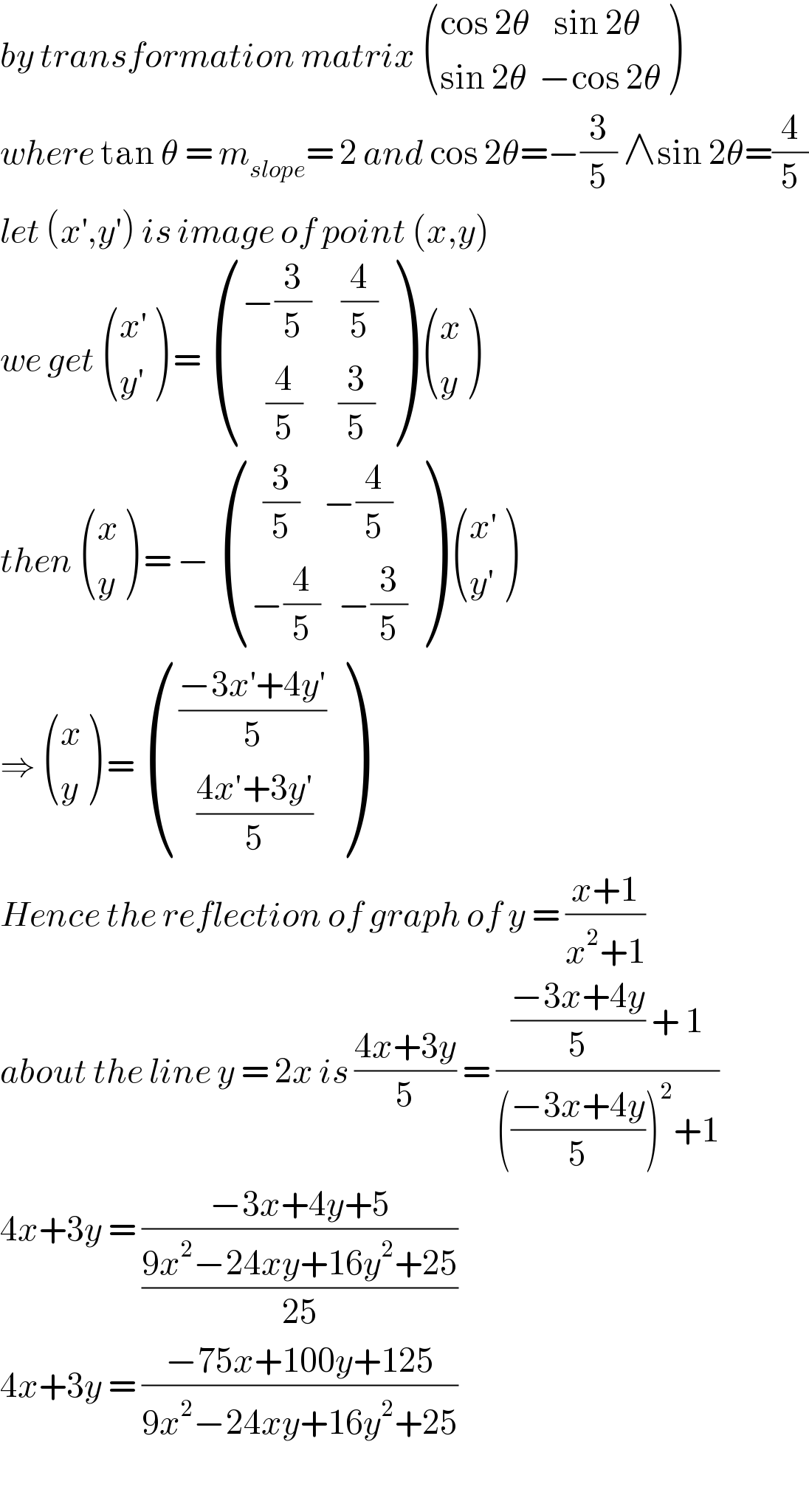
Question and Answers Forum
Question Number 118874 by bemath last updated on 20/Oct/20

Answered by bramlexs22 last updated on 20/Oct/20

Commented by benjo_mathlover last updated on 20/Oct/20

| ||
Question and Answers Forum | ||
Question Number 118874 by bemath last updated on 20/Oct/20 | ||
 | ||
Answered by bramlexs22 last updated on 20/Oct/20 | ||
 | ||
| ||
Commented by benjo_mathlover last updated on 20/Oct/20 | ||
 | ||